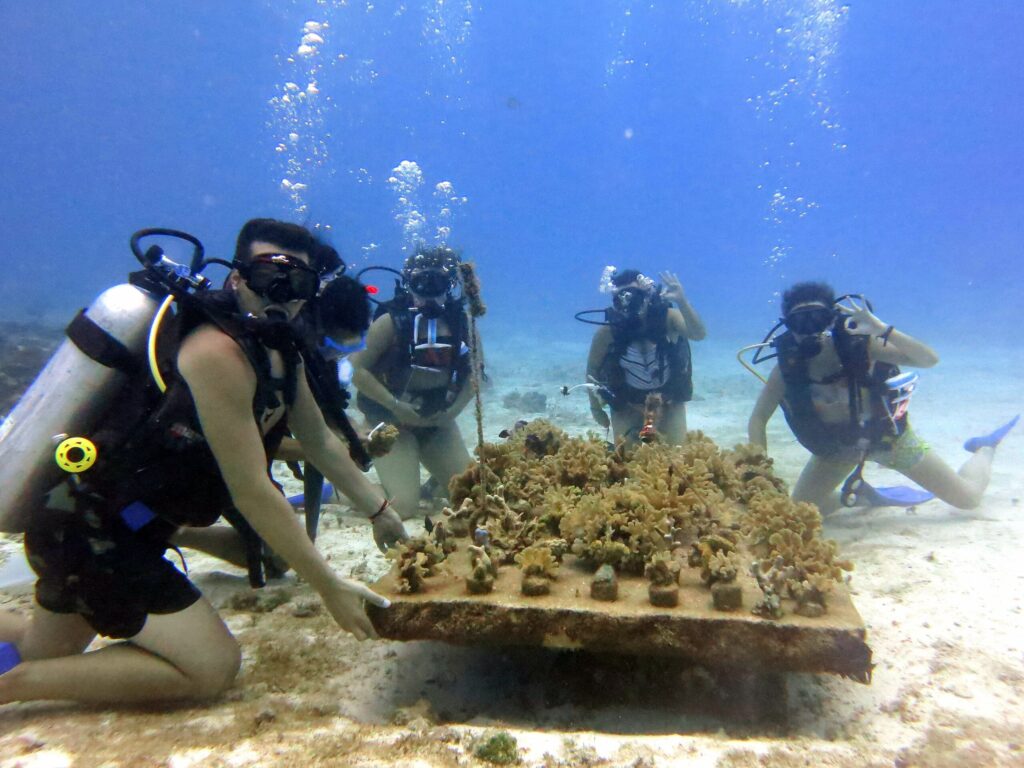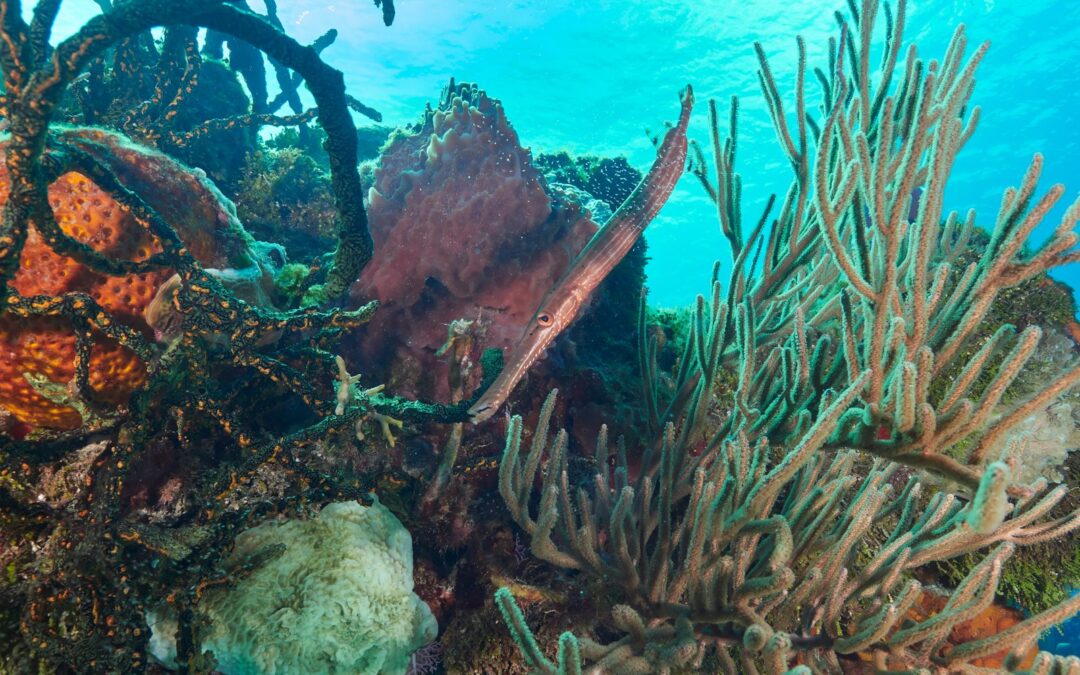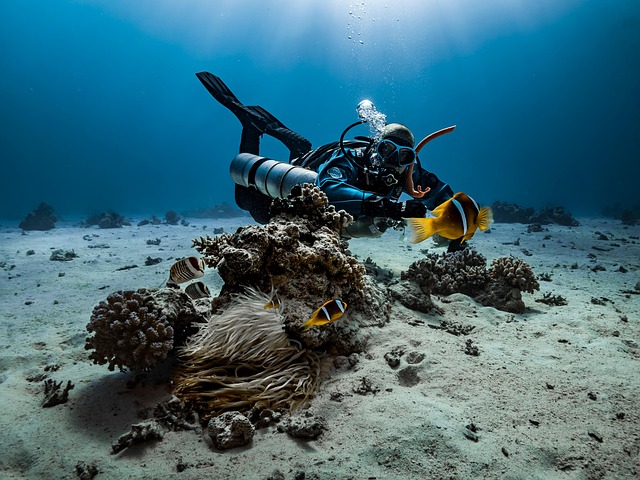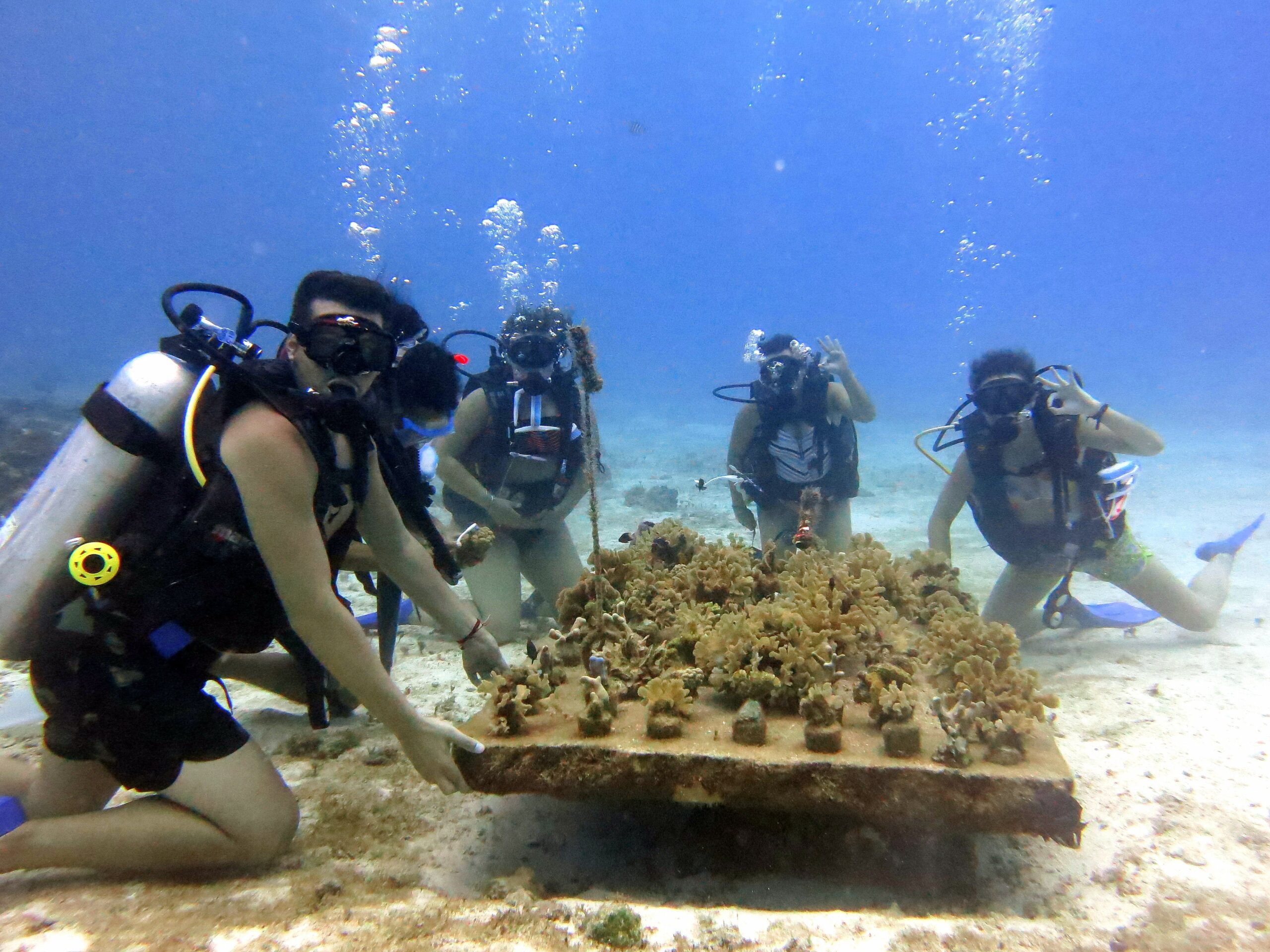Coral Restoration: Can It Save Coral Reefs?
Coral reefs, often referred to as the “rainforests of the sea,” are among the most biodiverse ecosystems on Earth.
However, they are facing unprecedented threats, with climate change, ocean acidification, and human activities causing severe damage. As a result, coral restoration has become a critical topic in marine conservation.
But can coral restoration truly save coral reefs?
This article delves into the complex issue of coral restoration, exploring its methods, challenges, and future directions.
Understanding Coral Restoration

Coral restoration encompasses a series of activities aimed at recovering damaged coral reefs. It includes methods such as coral transplantation, coral nursery cultivation, and artificial reef construction. The primary goal is to restore the structural integrity and ecological functions of coral reefs.
Traditional coral restoration often focuses on growing corals in nurseries and then transplanting them to degraded reef areas. While this approach has achieved some success, it faces significant limitations. Research indicates that if local threats to coral reefs are not reduced, the survival rate of transplanted corals remains low.
Additionally, climate change poses a major challenge. Rising ocean temperatures and acidification create unfavorable conditions for coral survival. Simply transplanting corals without addressing the root causes of reef degradation is unlikely to yield long-term success.
Challenges of Coral Restoration Methods
-
Dependence on Local Environmental Conditions: If corals are transplanted to areas already threatened by wastewater pollution, overfishing, or other local stressors, their survival chances diminish. For example, in regions with severe wastewater pollution, newly planted corals may struggle to adapt to the poor water quality, leading to high mortality rates.
-
Climate Change Constraints: As ocean temperatures rise, corals that are not heat-tolerant face survival challenges. While some scientists and conservationists focus on planting more heat-tolerant coral species, this approach carries risks. Human selection of coral species may not align with future environmental changes. Moreover, breeding “super corals” that are heat-tolerant requires large-scale, long-term efforts spanning hundreds of years, coupled with the reduction of local threats to coral reefs, to achieve significant results.
-
Potential Genetic and Ecological Risks: Selective transplantation of corals may alter the genetic diversity of coral populations. Additionally, the introduction of non-local coral species could disrupt the ecological balance of reef areas.
The Power of Holistic Restoration Strategies
True coral restoration goes beyond mere coral transplantation. It involves addressing the root causes of reef degradation and restoring coral reefs to a healthier state. This holistic approach achieves better restoration outcomes.
-
Reducing Local Threats: Implementing measures such as wastewater treatment, regulating fishing activities, and controlling coastal development can alleviate direct pressures on coral reefs. For instance, in West End, Roatan, Honduras, a community-operated wastewater treatment plant significantly reduced coral disease rates from 25% to 0%. In Maui, Hawaii, volunteers restored dirt roads using native plants to trap sediment runoff, preventing it from reaching coral reefs.
-
Combating Climate Change: Reducing carbon emissions is crucial for mitigating the impacts of climate change on coral reefs. Various organizations are advancing initiatives in clean energy and sustainable production. At the same time, leveraging the natural adaptability of coral reefs is essential. By reducing local threats in areas where corals are already heat-tolerant and where coral larvae settle, corals can spread their heat-tolerant genes, gradually enhancing the heat resistance of coral reefs.
Case Studies of Successful Coral Restoration
-
Tela Bay, Honduras: Through partnerships with communities to establish sustainable fisheries, a 483% increase in fish biomass was observed. This not only improved the ecological environment of coral reefs but also enhanced their resilience.
-
Great Barrier Reef, Australia: The Reef 2050 Plan adopts a comprehensive approach, integrating coral restoration with water quality improvement, fishing regulation, and climate change adaptation. It has achieved positive outcomes in restoring coral reef health and biodiversity.
-
Coral restoration program in Cozumel, Mexico, USA: Carried out in association with the local non-profit organization “Cozumel Coral Reef Restoration AC,” and it’s a great way to explore, understand, and preserve the local ecosystem. Proceeds from this activity support the Coral Farms program in Cozumel, allowing Cozumel Coral Reef Restoration to continue its efforts to replenish coral reefs
The Future of Coral Restoration
Coral restoration holds promise but requires long-term commitment and scientific planning. The following directions deserve attention:
-
Innovative Restoration Technologies: Research and develop advanced coral restoration technologies, such as assisted evolution and gene editing, to enhance coral adaptability and resilience.
-
Collaborative Restoration Efforts: Strengthen collaboration among governments, research institutions, NGOs, and communities to form a united force for coral restoration. Share experiences and resources to improve restoration efficiency.
-
Monitoring and Assessment: Establish long-term monitoring systems for coral reefs to evaluate restoration outcomes and adjust strategies promptly. Use scientific data to guide restoration efforts.
-
Public Awareness and Education: Enhance public understanding of coral reef conservation through educational campaigns and ecotourism. Encourage public participation in coral restoration and foster a sense of responsibility toward marine ecosystems.
Conclusion
Coral restoration alone cannot magically save coral reefs, but it plays a vital role in their recovery.
By combining coral transplantation with measures to reduce local threats and address climate change, we can restore coral reefs to a healthier state and enhance their resilience.
Coral restoration is a long-term and complex process that requires global collaboration and sustained effort.
Protecting coral reefs is not only crucial for marine biodiversity but also for the well-being of humanity.
Let us join hands to safeguard these precious marine ecosystems.







